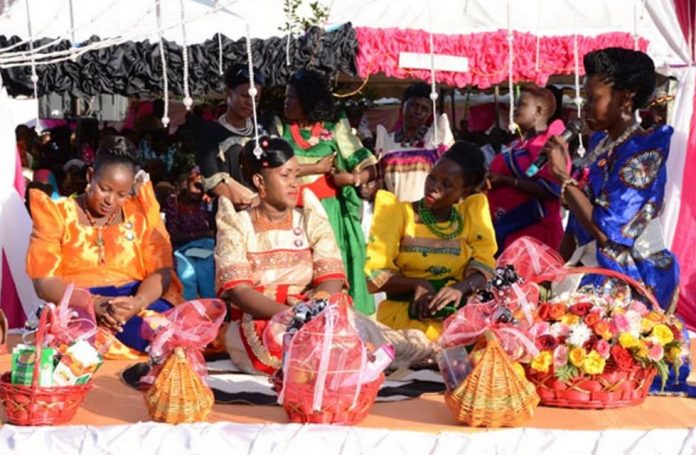Every tribe has a unique culture and this applies especially to the traditional Ugandan weddings of each. Here’s an insider’s look at the unique traditional wedding ceremonies of the Acholi and the Baganda.
Acholi Culture
In the Acholi culture, the traditional wedding takes two days. The first day is occupied with cooking as the bride-to-be and her family spend hours cooking and decorating the compound. The action begins in the night with the arrival of the groom and his entourage. He finds the compound dark and he and his entourage are required to bring along a couple of lamps to ‘light the way’. When he gets to the house of his intended bride, he is not allowed to enter it standing up right. He and his company must enter the house on their knees. They have come to ask for a young lady’s hand in marriage after all!
During this entrance and negotiations, the bride is seated with her entourage in a corner of the house in view of her suitor. She does have contact with him while the negotiations are going on with her elders.
After the negotiations have been successful the lights will be put on and the real celebrations begin. All the preparations of the day will pay off as everyone- the hosts and the guests – enjoy the meal that has been prepared. These parties can go on until the next morning even after the groom and his party has left. The bride remains behind as the ceremony continues the next day.
At around midday the following day, the groom and his party will come back to publicly and officially claim his bride. The bride is no longer in hiding as she and her entourage will be paraded before her suitor so he can confirm this is who he paid for the night before. Only then will she be handed over to him as his wife.
Baganda Wedding
The Baganda traditional weddings, on the other hand, start with the parading of the bride-to-be. After the groom has identified his bride then negotiations may begin. In this culture however, the groom does not participate in negotiating the bride price. His elders will finalise the negotiations and he will be informed that he has been accepted only after it is done.
One similarity in both tribes is the bride’s wardrobe changes. She can wear as many different outfits as she wants but mostly changes each time she comes out to meet with her guests. While changing outfit is not mandatory it is preferred in both tribes and gives the bride-to-be and her family a sense of pride and chance to show off her beauty. Some brides may change outfits up to five times, while others may choose not to change at all. Some brides also require their entourage to change but other do not.
The end result in both cultures is a grand feast after successful negotiation. At times, the negotiations are unsuccessful and the groom and his entourage have to leave without his sobbing bride. This is rare and only happens as a result of miscommunication at the outset. Usually, there is negotiation between the families related to the bride price prior to the actual ceremony in order to make sure that both parties are well prepared. Failure to reach an understanding during the traditional ceremony is like a modern wedding being stopped half way through right before the couple can be pronounced husband and wife!




















